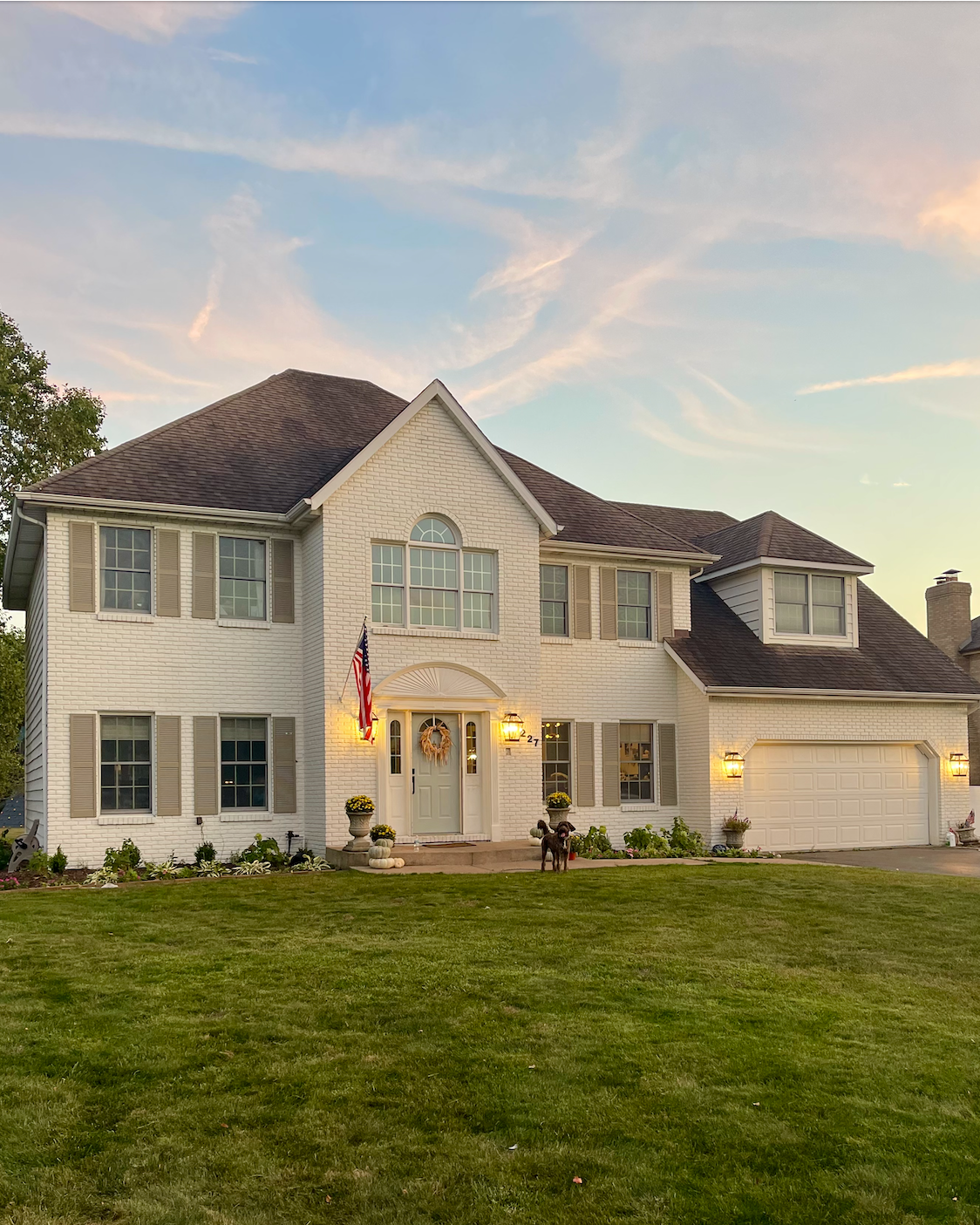
Renovating your home takes WORK. Throughout the process, there are times where it makes sense to pay the money for a professional to do the job and other times where it makes more sense to do it yourself! If you're up to the challenge of painting your brick, there are a few steps that make the process so much easier.
Don't worry, we were your guinea pigs! We painted our brick last September, and it turned out amazing! We decided to go with a stark, white look on top of what was originally light-brown, heathered brick. The color totally makes the outside of the house pop -- we're beyond happy with how it turnout out.
As the weather gets colder in the Midwest, you might have to act fast before it's too late to transform yours too. Here are some tips that we thought made the process of painting our brick so much easier:
1. Watch The Weather
Before you do anything, you need to plan! In this case, you need to plan a good time to get the job done. Painting in the right weather conditions is super important because it affects the cure of the paint and its overall life expectancy. We recommend trying to paint when its at least 50 degrees and sunny for a few days with a humidity of no higher than 70 percent. Painting in high humidity causes a longer drying time, which results in a poor finish. Who wants to paint outside on a cold or humid day anyways?! The exterior of your house is the first thing people see when they come over, you'll want to paint to impress!
2. Clean The Brick Thoroughly
The first step to painting your brick is to get all the spider webs, dirt, efflorescence, etc. off. It is important to start with a fresh slate before painting to make sure the paint adheres to every area. We recommend using a power washer on a lower setting and rounding it up by scrubbing the brick with good soap and water. This may sound tedious, but you will be SO happy you did it when you get a better overall finish. If you're having major trouble getting spots clean, try applying some trisodium phosphate. Make sure you use protective gear while applying. It's a good rule of thumb to avoid any acidic clearers on brick, as they can cause overall damage. After you get everything cleaned, this is also the time to patch up any damaged areas that you find. Allow the brick to completely dry before moving on to the next step. The less moisture on the bricks, the better!
3. Prime
You'll want to use acrylic or latex paint primer for this step. If the primer that you chose appears to have a thicker consistency, add a bit of water to the mixture to help the paint really adhere to the brick.
4. Caulk and Seal Areas That Could Let Moisture In
Any cracks and holes should be caulked during this time in the painting process. This is extremely important to the life-expectancy of your paint because it will keep out any moisture from getting under the paint and entering into the brick and mortar. Make sure to caulk any area that could let in water, such as: Around window treatments, doors, and trim. Let the sealant dry completely before painting.
5. Paint
Now you've reached the good part! We recommend using acrylic or latex paint when painting your brick exterior. Start painting on the side that will remain in the shade for the longest time for an even dry, and work top to bottom. We've found a smaller brush helped us get the grooves of the brick to really make sure paint adhered to every area. Painting brick usually requires a combination of painting methods to get the job done. We mostly used a spray gun and fixed any problem areas with a small brush. Be prepared to do two coats on this project!
After the paint is dry, enjoy your brand new brick! We would love to see how it came out! Tag us in your finish products on Facebook and Instagram @MegMade.


Leave a comment